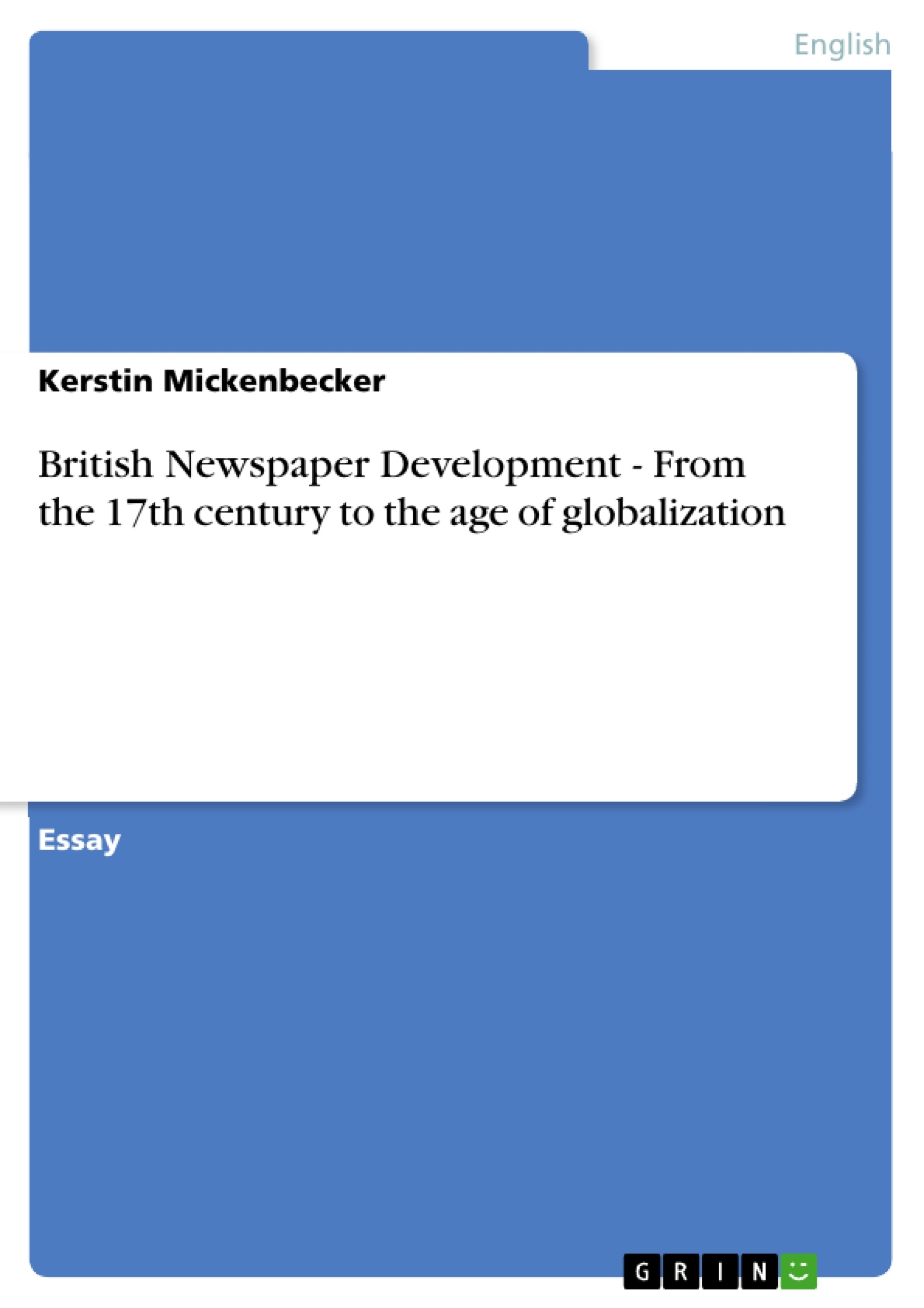Rudyard Kipling’s poem “The Press” exemplifies very clearly the dominant role of the press in the late 19th century. From this, we can conclude that not only the role of the press is a much discussed and disputed topic today but that it was also in the past. It gives us also a hint that “lessons” of media history are essential in order to get an understanding of its structures, content, and influence. Present-day media arrangements are not natural and unavoidable. A study of media history makes us also aware of alternatives, i.e., how media could have been or can be arranged. In this essay, I will portray the history of the newspaper development from the 17th century until the 21st century. My aim is to point up how the structures, methods of news gathering and diffusion via the mass medium newspaper have evolved by giving a brief overview over the important stages in the development process. Since this medium boasts such a vivid history, and, as mentioned before, media history is an important chapter to learn about, I want to focus upon the earlier periods of newspaper publishing. Constraints of space do not allow to elaborate on the current debates about media issues. The essay is addressed to students of media studies and should be regarded as a basis reading before exploring further fields of media studies.
Table of Contents
- I. Introduction
- II. The early newspaper development (17th – 19th century)
- II.1. The radical press and the Stamp Act
- II.2. Changes in the Economic Organization of the Press:
- II.2.1. The rise of advertising
- II.2.2. Industrialisation
- II.2.3. Press barons
- III. The 20th century
- III.1. The Popular Press and War
- IV. The 21st century
- IV.1. Competition and globalisation
- V. Conclusion
Objectives and Key Themes
This essay explores the history of newspaper development from the 17th to the 21st century. The main objective is to trace the evolution of structures, news gathering methods, and diffusion via the mass medium of the newspaper. The essay focuses on earlier periods of newspaper publishing, highlighting the significant stages in the development process.- The impact of the radical press on political discourse and social reform.
- The role of economic forces, including advertising, industrialization, and press ownership, in shaping the newspaper industry.
- The evolution of the newspaper from a relatively limited medium to a powerful force in shaping public opinion and influencing political events.
- The challenges faced by the newspaper industry in the 20th and 21st centuries, including the rise of new media and the impact of globalization.
Chapter Summaries
- The introduction sets the scene by highlighting the historical significance of the press and its enduring influence on society. It underscores the importance of understanding media history to grasp the current state of media structures, content, and influence.
- Chapter II explores the early development of newspapers, tracing their evolution from news sheets to daily publications. It examines the emergence of the radical press and its role in shaping political discourse and promoting social reform.
- Chapter II.1 delves into the impact of the radical press and the Stamp Act. It examines the role of radical newspapers in articulating working-class demands and promoting social change.
- Chapter II.2 analyzes the economic changes that shaped the newspaper industry, including the rise of advertising, industrialization, and the emergence of press barons.
Keywords
The core themes and concepts explored in this essay include the development of the newspaper industry, the role of the radical press in social and political reform, the impact of economic forces on media, the evolution of media structures, and the historical significance of understanding media history.- Quote paper
- Kerstin Mickenbecker (Author), 2004, British Newspaper Development - From the 17th century to the age of globalization, Munich, GRIN Verlag, https://www.grin.com/document/58333




